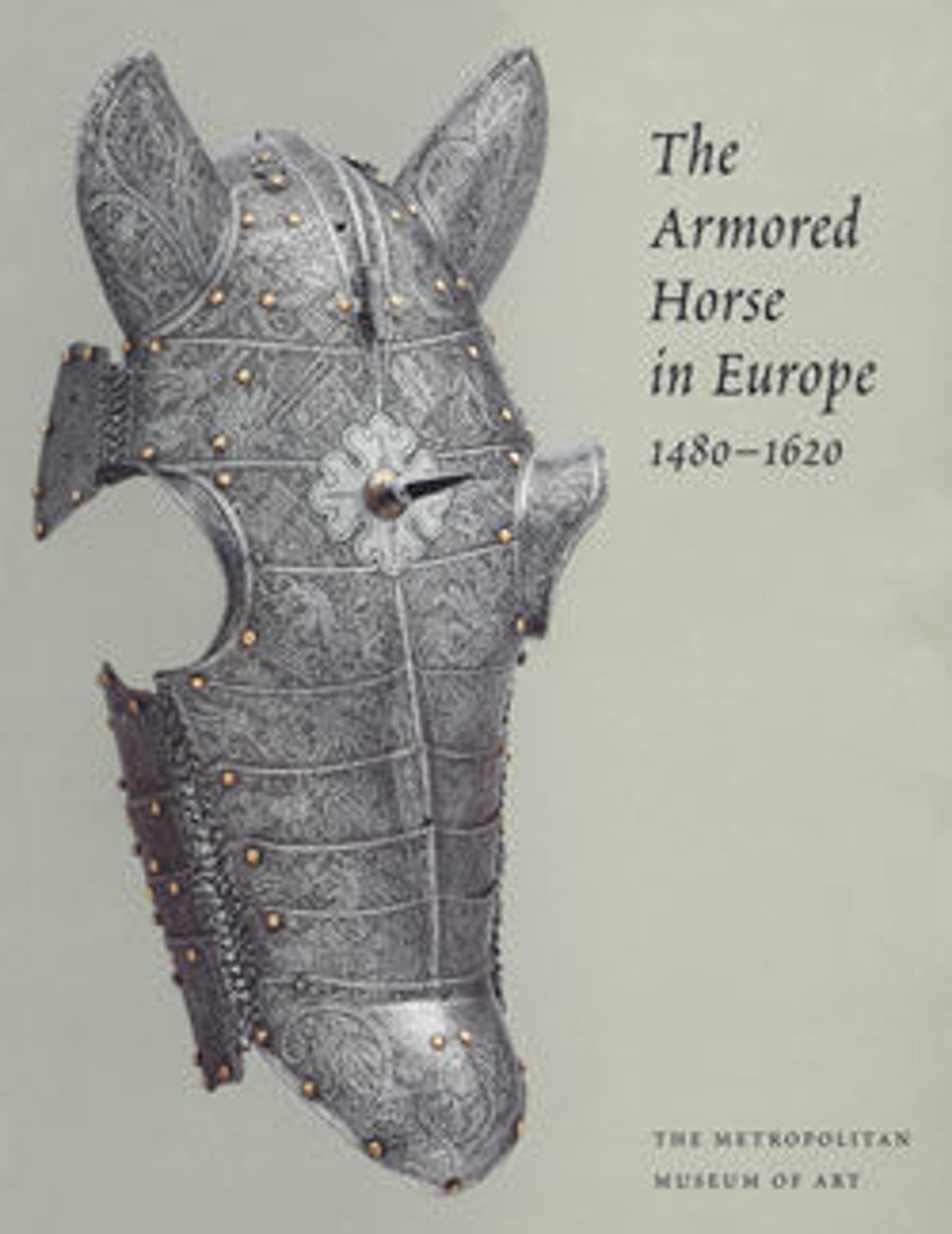Peytral
This peytral belongs to a large group of horse armor, including more than a dozen peytrals, which came from the armory of Nieśwież Castle, the seat of the Polish noble family Radziwill, the greater part of which was sold at two London auctions in 1926 and 1927. Most of the peytrals from the group were made in Nuremberg and are struck with that city's control mark. This example also bears a related Nuremberg mark, the letter N within a pearled circle, on the inside of the central plate.
The Radziwills ordered armor from a number of German armorers during the sixteenth century. The Metropolitan Museum is fortuante to own important pieces from their armory, among them the portions of a magnificent "costume" armor made about 1525 by Kolman Helmschmid of Augsburg, possibly for Prince Jerzy Herkules Radziwill (acc. nos. 24.179 and 26.188.1, .2), and elements belonging to a larger garniture of armor with distinctive gilt and polychromed decoration made about 1555 by Kunz Lochner of Nuremberg for Prince Nikolaus "the Black" Radziwill (acc. nos. 21.42, 14.25.854). In addition to the princely armory, which contained armor and weapons intended for use by the Radziwills and their retainers, the family's collection is also thought to have included many pieces from the armory of the Teutonic knights at their stronghold of Königsberg, where Prince Boguslav Radziwill was governor from 1657 until his death in 1669.
This peytral is comparatively plain in appearance. The presence of angular turns along the edges rather than roped ones suggests a date in the first quarter of the sixteenth century. The lack of decoration, apart from the wide, recessed band bordering the main edges, and the fact that it belongs to a large group of similar horse armor lend some credibility to the assumption that it may originally have come from Königsberg. All the rivets as well as the screws connecting the three plates are modern replacements.
The Radziwills ordered armor from a number of German armorers during the sixteenth century. The Metropolitan Museum is fortuante to own important pieces from their armory, among them the portions of a magnificent "costume" armor made about 1525 by Kolman Helmschmid of Augsburg, possibly for Prince Jerzy Herkules Radziwill (acc. nos. 24.179 and 26.188.1, .2), and elements belonging to a larger garniture of armor with distinctive gilt and polychromed decoration made about 1555 by Kunz Lochner of Nuremberg for Prince Nikolaus "the Black" Radziwill (acc. nos. 21.42, 14.25.854). In addition to the princely armory, which contained armor and weapons intended for use by the Radziwills and their retainers, the family's collection is also thought to have included many pieces from the armory of the Teutonic knights at their stronghold of Königsberg, where Prince Boguslav Radziwill was governor from 1657 until his death in 1669.
This peytral is comparatively plain in appearance. The presence of angular turns along the edges rather than roped ones suggests a date in the first quarter of the sixteenth century. The lack of decoration, apart from the wide, recessed band bordering the main edges, and the fact that it belongs to a large group of similar horse armor lend some credibility to the assumption that it may originally have come from Königsberg. All the rivets as well as the screws connecting the three plates are modern replacements.
Artwork Details
- Title:Peytral
- Date:ca. 1510–20
- Geography:Nuremberg
- Culture:German, Nuremberg
- Medium:Steel
- Dimensions:27 1/2 x 25 7/8 x 13 3/4 in. (69.9 x 65.8 x 34.8 cm); Wt. 8 lb. (3660 g).
- Classification:Armor for Horse
- Credit Line:Gift of Prince Albrecht Radziwill, 1927
- Object Number:27.183.43
- Curatorial Department: Arms and Armor
More Artwork
Research Resources
The Met provides unparalleled resources for research and welcomes an international community of students and scholars. The Met's Open Access API is where creators and researchers can connect to the The Met collection. Open Access data and public domain images are available for unrestricted commercial and noncommercial use without permission or fee.
To request images under copyright and other restrictions, please use this Image Request form.
Feedback
We continue to research and examine historical and cultural context for objects in The Met collection. If you have comments or questions about this object record, please contact us using the form below. The Museum looks forward to receiving your comments.
